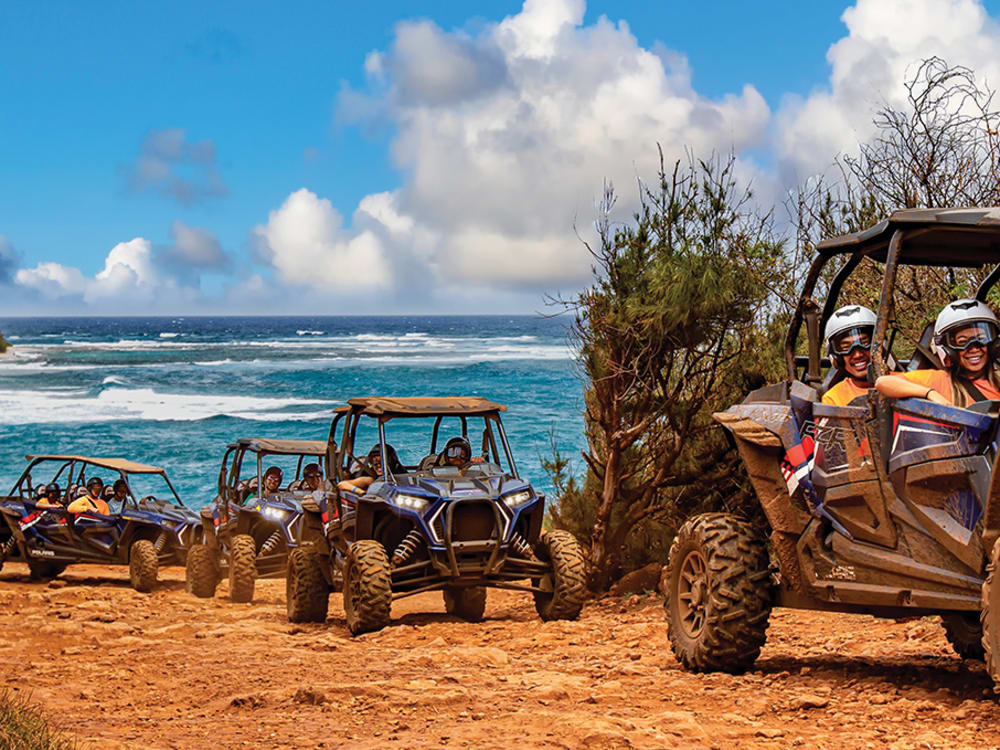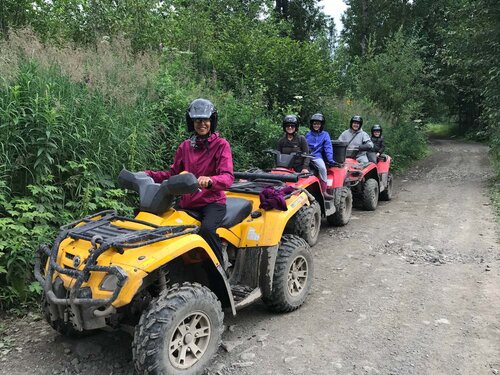Browse the Wild with Self-confidence: ATV Solutions Await
Wiki Article
Mastering the Trails: ATV Riding Tips and Methods
Mastering the Trails: ATV Riding Tips and Techniques is a comprehensive guidebook developed to outfit motorcyclists with the knowledge and abilities required to browse off-road surfaces with confidence and accuracy. This expertly crafted source dives right into various elements of ATV riding, consisting of appropriate body placing, navigating uphill and downhill tracks, understanding tight turns, steering obstacles, and adopting essential safety and security precautions. Composed in a professional design, this overview stresses the significance of strategy and offers functional suggestions for bikers of all degrees. With a focus on safety and ability growth, Grasping the Trails is an essential for ATV enthusiasts seeking to boost their riding abilities and take on any type of route with finesse.Value of Appropriate Body Positioning
Correct body placing is important for taking full advantage of control and stability while riding an ATV. When riding off-road lorries like ATVs, keeping the correct body setting is crucial for achieving optimum control and stability. By placing your body properly, you can effectively distribute your weight and maneuver the ATV much more efficiently, enabling a more secure and extra delightful adventure.This suggests keeping your body upright and centered over the ATV at all times. In addition, keeping your body upright allows you to much better absorb bumps and shocks, minimizing the effect on your body and enhancing total comfort.
Furthermore, it is necessary to hold the handlebars securely and keep your arms slightly curved. This position enables much better control and maneuverability, as it allows you to rapidly react to modifications in surface or unforeseen obstacles. Maintaining your arms unwinded and a little bent additionally helps soak up resonances and shocks, decreasing exhaustion and improving total control.
Tips for Navigating Uphill and Downhill Trails
When navigating uphill and downhill routes on an ATV, bikers have to utilize critical techniques to safely and properly maneuver via varying surfaces. Uphill routes require bikers to move their body weight onward to boost traction on the front wheels. This assists to avoid the ATV from turning backward. Meanwhile, motorcyclists need to maintain a constant throttle to keep the engine power constant and prevent delaying. Furthermore, it is essential to remain concentrated and expect expect any kind of barriers or adjustments in the route's surface area.
Mastering Tight Turns and Maneuvering Obstacles
To successfully navigate tight turns and maneuver obstacles on an ATV, motorcyclists have to use efficient methods and keep a focused method. When coming close to a limited turn, it is crucial to reduce and change your body weight towards the within the turn. This assists preserve balance and control throughout the maneuver. Additionally, leaning onward and clutching the handlebars strongly enables for better control over the ATV's steering. It is essential to keep in mind to look ahead, concentrating on the preferred course instead than infatuating on the barriers or the turn itself. By looking ahead, riders can prepare for any kind of possible difficulties and adjust their rate and body setting accordingly - atv.When it concerns steering barriers, such as rocks, dropped trees, or deep ruts, bikers should approach them with care. It is a good idea to reduce speed and stand on the footpegs to take in the influence. Maintaining a loose grasp on the handlebars and allowing the ATV to relocate underneath you will assist preserve equilibrium and control. Thoroughly pick your line and avoid unexpected activities, as jerky activities can cause loss of control. Bear in mind to always wear proper safety equipment, such as a helmet, goggles, handwear covers, and protective clothes. These methods, paired with technique and experience, will allow riders to confidently browse limited turns and overcome challenges on their ATV journeys.
Necessary Safety And Security Preventative Measures for ATV Riding
ATV riders click reference should prioritize adhering to crucial security precautions to guarantee a safe and satisfying riding experience. These security precautions are important in reducing the risks related to ATV securing the motorcyclist and riding from prospective accidents or injuries. Most importantly, riders must constantly put on appropriate protective gear, including a headgear, goggles, gloves, long pants, and sturdy boots. This gear is designed to offer physical defense and stop injuries in situation of a fall or accident.Furthermore, it is important to acquaint oneself with the ATV and its controls prior to riding. Examining the ATV's problem prior to each ride is also essential.

Techniques for Riding in Various Terrains
Acquainting oneself with the techniques for riding in various terrains is necessary for ATV motorcyclists to browse different landscapes securely and efficiently. Each surface provides its own challenges and needs specific skills and strategies to guarantee a controlled and smooth experience.When riding on uneven and rough surface areas, it is crucial to preserve a relaxed and well balanced posture. Keeping your body loose and flexible will certainly enable you to soak up shocks and maintain control over the ATV. In addition, it is essential to maintain a constant rate and prevent abrupt velocity or braking, as this can result in loss of traction and prospective mishaps.
For sloppy or sandy terrains, it is suggested to minimize tire stress to raise traction. Reducing the tire pressure enables the tires to grasp the ground much better, preventing the ATV from obtaining stuck. It is also recommended to utilize a greater gear and maintain a regular speed to avoid the wheels from rotating and digging into the terrain.
When riding on high slopes or declines, it is important to move your body weight forward or backward to maintain balance. Leaning forward while climbing up uphill will certainly stop the ATV from flipping backward, while leaning backward while coming down will certainly stop the ATV from turning forward. Furthermore, it is important to use the ideal equipments and prevent sudden acceleration or stopping, as this can trigger loss of control and potential crashes.
Conclusion
In final thought, understanding ATV riding requires correct body positioning, skilled navigating of uphill and downhill trails, and the capability to steer tight turns and barriers. click to find out more By practicing these methods and adhering to safety and security guidelines, ATV motorcyclists can boost their skills and take pleasure in the routes to their fullest capacity.When taking on downhill routes, riders must change their body weight backward to maintain stability and stop the ATV from turning onward.To successfully navigate tight turns and maneuver challenges on an ATV, cyclists have to employ effective methods and preserve a concentrated technique.ATV cyclists must prioritize adhering to essential security precautions to make sure a secure and enjoyable riding experience. These security precautions are vital in lessening the dangers connected with ATV riding and shielding the cyclist from possible mishaps or injuries. Leaning ahead while climbing uphill will avoid the ATV from flipping backward, while leaning in reverse while coming down will certainly avoid the ATV from flipping forward.
Report this wiki page